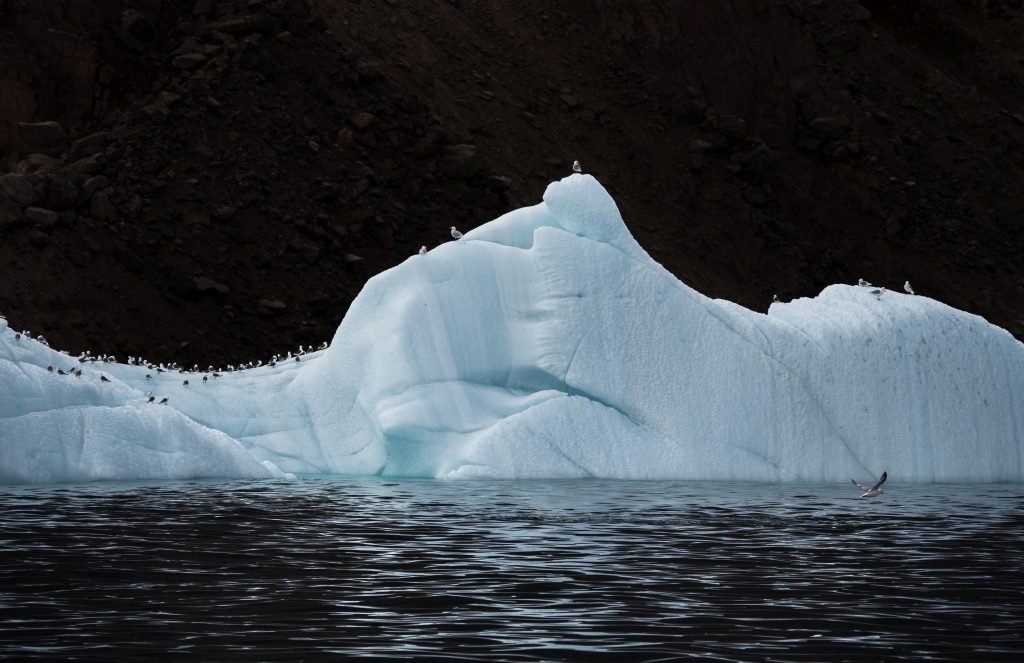Submission 2023
| Submitted by: | Patrick White |
| Department: | Earth and Atmospheric Sciences |
| Faculty: | Science |
The Arctic is warming 5x faster than the rest of the globe causing glaciers to rapidly melt.
These arctic sea birds resting on an iceberg find themselves in a rapidly changing environment. With the Arctic warming up to four times faster than the rest of the globe, reduced sea ice and melting glaciers are just some of the irreversible changes occurring across the Arctic landscape. Part of my research is to understand how microscopic ocean photosynthesizers (phytoplankton) may be relying on nutrients from melting glaciers and what might happen to these phytoplankton as the glaciers disappear. Phytoplankton form the base of ocean food webs and thus changes in their abundance can have cascading impacts up the food web. This photo was taken during my 2021 summer field season in the Canadian Arctic Archipelago (Jones Sound, Nunavut). These sea birds are resting on an iceberg that recently fell from a glacier just outside of the frame. The glacier nearby may be enabling the high level of bird and whale activity found in this region by supporting higher phytoplankton abundances with extra glacier-derived nutrients. As these glaciers melt and disappear, phytoplankton that rely on glacier-derived nutreints will be reduced, thus reducing the food availability for our photogenic sea birds.

